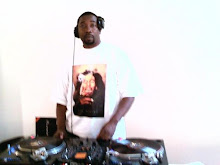Tuesday, January 21, 2014
Inside the Pioneer DJM-707/ DJM-909 fader
I've had 2 Pioneer DJM-707's and 3 DJM-909's since 2006. Since then, I've scoured the net for instructions on how to clean and lube the crossfader. All to no avail. So being the enterprising fellow that I am, I decided to open it up and have a look my self. Once inside, I found a well built piece of precision machinery that is well suited to it's intended purpose. I also found that due to the offset design of the fader stem, that comes out from the side then over the top and up through the faceplate, there wasn't much dust, dirt, or grime inside the body of the fader or on the rails at all. I've been inside every fader of every mixer that I've ever owned and this was the cleanest I've ever seen. I've owned this mixer for four years and never clean the crossfader. Not to mention that I bought it used and doubt that it was ever cleaned previously. Having gone through the trouble of disassembling it, I went ahead and cleaned what little dirt was there. I cleaned all rails and the carrier with rubbing alcohol, cotton balls and Q-tips, then I put everything back together. Lastly, I sprayed the rails with DeoxIT Fader F5 lubricant to make it all nice and slippery. This was a big mistake because it instantly caused sticking and the fader didn't slide as well as it did before the cleaning. I tried re-cleaning the rails but didn't feel like dismantling the fader to thoroughly remove all the DeoxIT. It slides well enough, but I will definitely have to open it up again. I went against my better judgement with the lube because I found that in the past lubing caused pre-mature sticking once dirt and grime mixed with the lube creating a vicious cycle of cleaning and lubing. I found that a thorough cleaning without lube provided a longer period of silky smooth glide goodness between cleanings. So there you have it. All that's left is the never before seen photos of the inside of the crossfader.
Labels:
707/ 909 crossfader,
crossfader,
dj uno,
mixer,
Pioneer DJM-707,
Pioneer DJM-909
Subscribe to:
Post Comments (Atom)









I don't understand the principle of operation. Where's the tracks? Where's the wipers?
ReplyDeleteIt's optical, non contact. A piece of reflective material rests on the bottom of the fader stem as seen in the second picture from the bottom. A sensor detects it's position and movement and is found in the bottom of the cover seen in the third picture from the bottom.
ReplyDelete